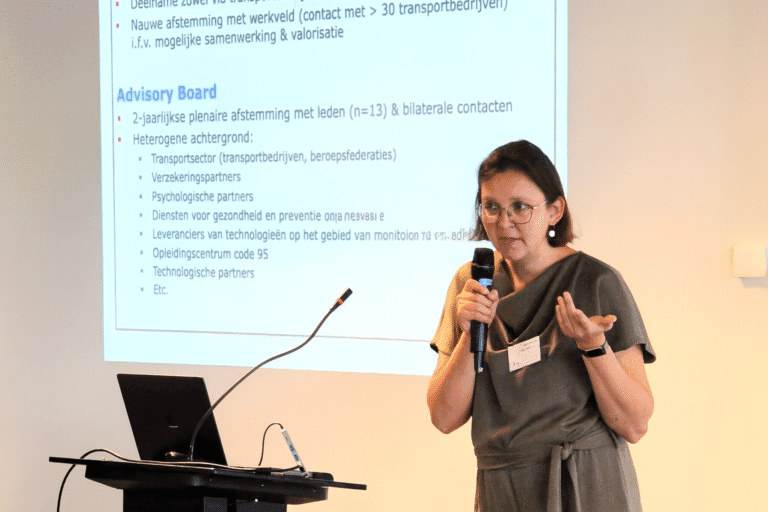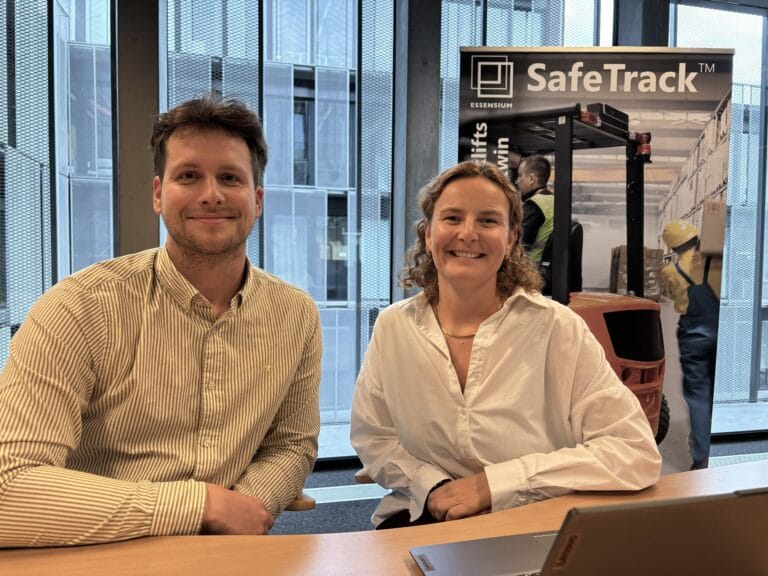Four trends that reshape the future of food logistics

The logistics world is evolving rapidly. One sector seems to be evolving even faster than the others: food logistics. The food sector itself is undergoing fundamental changes and this is affecting logistics. Log!Ville foundation partner WDP recently published a white paper in which it describes four major trends that will determine the future of supply chains within the food sector.
To identify these trends, WDP called upon seven experts (*). Among other things, they describe how new consumer needs (think of the growth of home deliveries of groceries or meal boxes), the tightening of food regulations and the emergence of smart technologies that are raising the bar in the sector.
In this article, we mainly highlight some of the evolutions that matter to the Log!Ville community. Those wishing to read the report in full can download it here.
Trend 1 : Food safety above all
The chain between field and plate can be very long, posing many challenges. Europe therefore imposes a far-reaching set of hygiene standards and temperature control rules to reduce risks as much as possible.
One of the findings of the WDP report is that innovative supply chain systems must be able to do more than measure and control temperature. They must also be able to adjust and improve at all times, not only in the warehouse but also in the vehicle itself.
Incidentally, the right temperature is not the only factor in maintaining food safety. Light and humidity also play a role, especially when stored at room temperature.
These smart systems are complex and expensive for small businesses. There is a danger of creating a gap between the big players who can invest in smart technology and the smaller players with limited budgets.
Experts’ overall conclusions:
- Impeccable hygiene and careful refrigeration are top priorities
- A mix of government control and self-monitoring ensures compliance with strict regulations
- Investment in refrigeration and freezing technology is constantly increasing
- Every link in the supply chain is co-responsible
- The warehouse serves as a stockroom
Trend 2: The cold chain is gaining momentum
Safe food largely depends on the quality of the cold chain during transport. And that is no easy task, it turns out. That is why these chains are turning into a network of smart sensors and real-time data streams. This offers opportunities but also poses many challenges at the same time.
The big technological changes are happening not so much in the warehouse, but more on the way to and from the warehouse. More and more products are also being added to the cold chain, such as apples and pears. Also, the entire transport from the grower to the warehouse needs to be accurately refrigerated, no matter how short the route. So this means that the current innovation is and will be found mainly within transport.
Moreover, the transport sector is slowly moving away from traditional diesel-powered refrigeration units and systematically switching to smart, electric refrigeration technology.
Real-time data on temperature throughout the cold chain is becoming the norm.
But perhaps the biggest challenge is energy supply. Not only refrigeration and freezing require a lot of energy, but also storage automation. Switching to green electricity costs a lot of money, but in the long run these investments will pay for themselves.
Conclusions:
- The importance of refrigerated distribution continues to grow
- Logistics premises focus even more on refrigerated storage
- Maximising efficiency: one transport, different temperatures
- The shift towards more sustainability has started
Trend 3: Home delivery going through the roof
In recent years, consumers have succumbed to the convenience of e-commerce. Now that we work from home more often, the practical benefits of home delivery are clearer than ever. So the explosive growth of e-commerce is also impacting food logistics. The traditional route from grower via wholesaler to supermarket is by no means the only option anymore.
New players are entering the market, such as Dutch company Picnic or Limburg-based Hopr, which operate a bit like the mobile supermarkets of yesteryear. They use fixed time slots per neighbourhood and use sustainable, electric delivery vehicles.
Many consumers in cities expect fast deliveries, sometimes within 10 minutes. Flash suppliers such as Gorillas respond to this with their bicycle couriers. They use small warehouses within cities (city hubs). They are promising, but their business model does not seem future-proof (NVDR: since the report was edited, Gorillas disappeared from Belgium).
Traditional supermarkets seemed to lag behind but have been catching up since the corona crisis. Home deliveries are much more complex than stocking shops, though. The big challenge for them is to avoid bottlenecks in supply chains (and thus stagger orders and deliveries).
Possibly delivery robots offer a solution, but it will take at least 10 to 15 years before they possibly break through, especially when refrigerated products are involved.
Conclusions:
- E-commerce creates a new business model
- The new supply chain leaves out retailers
- Large warehouses become small city hubs
- Deliveries must be fast, but also sustainable
Trend 4: Anything for the algorithm
If you really want to organise your supply chain optimally, you need data – lots of data. As a supplier, the more you know about your customers, the easier it is to serve them. And in food logistics, it is vital: there is no room for guesswork when it comes to fresh food products.
This focus on data is not new, of course. The current evolution is very familiar, only it is happening at a much faster pace and with many more different applications.
To supply shops efficiently and organise home deliveries optimally, not only planning tools are needed, but also external data such as traffic jams, roadworks and weather reports need to be integrated.
Data not only make supply chains more efficient, they also influence logistics buildings. New layouts are needed to reduce the lead times of internal transports. This not only leads to shorter journeys, but also provides an opportunity to reduce stocks. However, handling more goods quickly also means more loading and unloading quays.
Data are also needed for the predictability of chains, which should also be transparent. Companies use ERP (enterprise resource planning) software to make their supply chains as transparent as possible. Such a system combines various activities of a company (production, purchasing, marketing, HR, etc.) into a whole. But there is still a lot of room for improvement, especially in a complex sector like food logistics.
Optimising home deliveries in cities will also require more and more data, if only to address the biggest challenge in the last mile: missed deliveries.
Conclusions:
- Data are the tools, 100% predictability is the goal
- However, the supply chain remains vulnerable
- Intelligent software reinvents sustainable urban logistics
(*) The seven experts:
- Wilco Janssen (Sligro, head of internal and external communications)
- Wiljan Daris (The Greenery, purchasing and commercial manager)
- Tom Malfroid (Colruyt Group/Collect&Go, supply chain manager)
- Jos Mierman (Ethelco, business partner – cold chain intelligence)
- Jonathan Weber (Urbantz, chief executive officer)
- Franck Toussaint (Biolog Europe, managing director)
- Steven Van Belleghem (Expert in digital marketing, techonology & customer experience)



